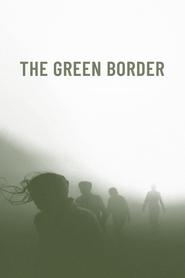[Holland's] decision to shoot in crisp black and white hints at forces beyond the frame as well. Holland senses the same winds of fascism chronicled in her Holocaust-set films Angry Harvest and Europa Europa blowing again across Europe. Without overloading the comparison, the simple yet scintillating decision to code her images as more reminiscent of historical memory challenges viewers to view these episodes of barbarism as belonging to a larger struggle for compassion to prevail over cynicism. [But as] Green Border shifts its focus away from the immediate plight of the refugees, Holland seems to wearily acknowledge that depiction alone cannot stir the senses enough to motivate engagement in the struggle.[…]
The journeys that Jan and Julia undergo feature such obvious narrativization that they cannot help but feel a bit out of sync with the more observation segments featuring the refugees. […] The use of pregnant women as inviolable symbols for the continuation of life feels similarly out of step with the unblinkered realism employed when following the refugees. Jan’s sections, which are the most compartmentalized from the main storyline of the film, are the most susceptible to plot contrivances.
— Marshall Shaffer (Slant Magazine)
Synopsis: In the treacherous and swampy forests that make up the so called “green border” between Belarus and Poland, refugees from the Middle East and Africa trying to reach the European Union are trapped in a geopolitical crisis cynically engineered by Belarusian dictator Alexander Lukashenko. In an attempt to provoke Europe, refugees are lured to the border by propaganda promising easy passage to the EU. Pawns in this hidden war, the lives of Julia, a newly minted activist who has given up her comfortable life, Jan, a young border guard, and a Syrian family intertwine.

